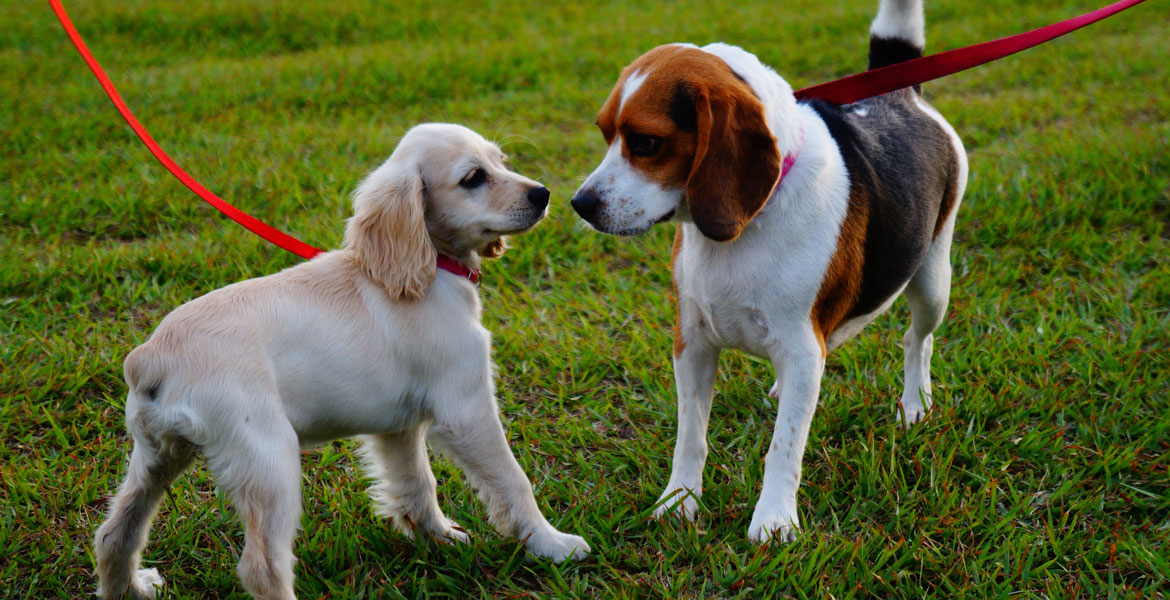
Dog Parks: What You Need to Know
Thursday, March 29, 2018
Dogs love to go for walks. Many dog owners are limited on where they can walk their dog and turn to dog parks.
Here is what you need to know about walking your dog and dog parks.
Visit your veterinarian. Your dog should be current on vaccinations, have a license, and be on flea and intestinal parasite control 12 months a year. This helps prevent your dog from being susceptible to disease or from passing disease to other dogs.
Teach your dog basic commands such as come, sit, stay, and leave it. These may be necessary commands to keep your dog out of trouble.
Find the right spot for you. A dog park should have adequate room for dogs to run. It needs secure fences, a double gate for entry, and a separate area for small dogs. A safe, sheltered area, a source of drinking water, and posted rules of conduct round out the list of requirements for a safe dog park.
Whenever you walk your dog or go to the dog park, be prepared. Take bags for cleaning up messes. Take an individual drinking bowl and water if none is available. Bring your cell phone in case you need assistance. A deterrent is helpful in case a fight breaks out between dogs. A spray, like pepper spray, or horn will work.
When you arrive, wait for other dogs to clear the gate before entering and taking your dog off leash. Watch your dog and keep an eye out for overly excited or aggressive dogs. Should your dog become fearful or overwhelmed, call him back in an upbeat voice.
Know your dog’s body language and when to intervene to keep him safe. Happy dogs bounce around, wag their tails, and have relaxed postures and facial expressions. Aggressive dogs growl, have a stiff posture, raised hackles and tail, and a closed mouth.
If things look like they are going south between dogs, call your dog and move to another spot. If a fight does break out, do not grab your dog’s collar; you could be hurt. Use your deterrent spray or horn.
Whenever going outdoors, consider the weather and the type of dog you own. A dog’s tolerance to heat and cold varies based on size, body composition, hair coat, health, and other factors.
Short-nosed and overweight dogs have a tougher time in hot weather. They may require more frequent rests, shorter walks, or a change in schedule to avoid the hottest hours of the day.
Smaller dogs, breeds with thin or short hair coats, and very young or very old dogs may be more negatively affected by cold weather. Some may even be prone to frostbite.
Avoid hot sidewalks, roads and other surfaces that can burn a dog’s footpads. Icy paths can be a slip hazard and broken edges of ice can be sharp enough to cut a dog’s feet.
Make sure your dog’s collar or harness fits properly to prevent injury or escape. Be sure your dog is microchipped and your contact information on file is current. If not chipped, then be sure your dog is wearing identification tags with your up-to-date contact information.
While out, don’t let your dog eat garbage or discarded food items. Avoid letting your dog have contact with dead rodents, wildlife or birds to prevent the risk of disease.
The environment can pose some challenges as well. Antifreeze and rodenticides are harmful to dogs if ingested. Plants such as foxglove and yews can also be toxic. Pennies, if swallowed, are very toxic so watch what your dog is picking up while you are out.
Don’t let your dog drink from, wade in, or swim in bodies of water that have a green scum, look like pea soup, or are reddish or abnormally discolored. They may contain a harmful algal bloom.
If you think your dog has come in contact with anything harmful, contact your veterinarian immediately.
Walking your dog or going to the dog park is a great source of exercise for both you and your dog. Enjoy your time with your dog and keep him, you, and other dog owners safe.
by Elisabeth Giedt, DVM
Veterinary Viewpoints is provided by the faculty of the OSU Veterinary Medical Hospital. Certified by the American Animal Hospital Association, the hospital is open to the public providing routine and specialized care for all species and 24-hour emergency care, 365 days a year.
